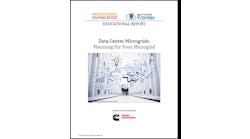The energy and healthcare industries share a mutual woe. Both are experiencing meteoric price increases.
The Alliance to Save Energy projects a household’s energy costs will be about $6,300 this year, representing about 13% of median pre-tax earnings. Meanwhile, the National Coalition on Health Care reports that medical costs rose 6.9%— two times the rate of inflation last year with total spending of $2.3 trillion or $7,600 per person. http://www.nchc.org/facts/cost.shtml
Fortunately, the U.S. Department of Energy has launched a program that brings energy efficiency to hospitals to drive down energy costs and reduce some of the financial pressure on the healthcare industry. http://www1.eere.energy.gov/buildings/energysmarthospitals/
The program is important because hospitals are significant energy consumers. A hospital’s energy intensity is 2.5 times that of a commercial building. U.S. hospitals spend more than $5 billion annually on energy, which is 1-3% of their budgets and equivalent to at least 15% of profits.
The program’s goal is to improve efficiency 20% in existing buildings and 30% in new construction. Cost savings are expected to be large — every $1 a non-profit hospital saves on energy is equivalent to generating $20 in new revenue, according to the DOE.
Hospitals are particularly good candidates for combined heat & power, which is 70-95% more efficient than conventional power production. CHP, as it is known, achieves this efficiency because it uses the heat produced in the generation process, rather than wasting it, as large grid-connected power plants do. Thus, it is able to use less fuel to electrify, heat and cool a building. http://files.harc.edu/Sites/GulfCoastCHP/Presentations/CHPForHospitals.pdf
CHP also offers hospitals back-up power if the electric grid goes down. During Hurricane Katrina, when almost everything was out of service, the 642-bed Baptist Medical Center in Jackson, Mississippi continued to care for patients without disruption because of its 3.2 MW CHP plant.
The DOE offers a free screening for hospitals so that they can see if they are good candidates for CHP http://www.bchp.org/prof-assessment.html#form
Pairing energy efficiency with other societal needs, such as bringing down healthcare costs, makes for good public policy. It offers the proverbial killing of two birds with one stone, or in this case with one coin reducing a double-burden on the average American’s pocketbook.
For more on healthcare microgrids, see the guide “Healthcare Microgrids: The Path to More Reliable, Clean, Lower Cost Energy in Hospitals,” downloadable free of charge courtesy of Hitachi.





